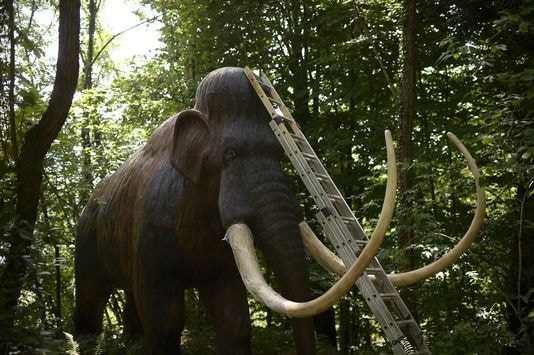Reconstructing the DNA of a mammoth
(Baonghean) - Can the extinct mammoth reappear on Earth? This question no longer seems too far-fetched when a group of scientists announced in the journal Current Biology that they have almost completed the process of reconstructing the genome of the animal that disappeared from Earth 4,000 years ago.
 |
| A model of a mammoth in Karpin Abentura park in Bilbao, Spain. Photo: Reuters |
According to the scientists' announcement, this reconstruction process is much more accurate than the experiment conducted in 2008. Scientists estimate that the accuracy of the genome reconstruction process is up to 80%. It is known that the experiment was based on two specimens of two mammoths that lived 40,000 years ago, discovered in northern Siberia and on Wrangel Island in the Arctic Ocean.
Many believe the breakthrough could lead to the creation of a mammoth – an elephant known for its long tusks and thick fur. “The idea of resurrecting a mammoth and seeing how it reacts and moves would be very interesting,” said Dalen of the Swedish Museum of Natural History, who was also involved in the study.
However, scientists assure that the goal of the research is not to revive this extinct species of elephant. Because reviving would pose ethical problems for researchers. Because if they want to create a mammoth, they would have to trade the life of the elephant carrying the genetically modified mammoth embryo. Scientists say this could cause pain to the female elephant and such an action would not be ethically justifiable.
In addition, Beth Shapiro, a researcher at the University of California at Santa Cruz, added that elephants are highly social creatures, and he believes that mammoths are no exception. Therefore, creating a mammoth would have to live alone in the Arctic, but creating more mammoths would not benefit humans. Therefore, if this work is carried out, it seems to be an ethical problem.
Researcher Hendrik Poinar of Canada’s McMaster University agrees that creating a mammoth and then locking it up in a zoo “wouldn’t be a good idea.” Instead, Poinar suggests researchers simply resequence the mammoth’s DNA and use that as a blueprint to get the job done.
Chu Thanh
According to Le Monde
| RELATED NEWS |
|---|


